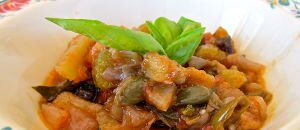Written by Maria Pistocchi — Monday, October 22nd, 2012
The hidden art of stewing and braising
Turn off the fire and take a look at some cooking methods.
I think that most of us generally just cook the food. We are happy if our recipe has a good taste, but rarely we pay attention to the cooking methods because we are too focused on the realization of the dish. Sometimes It can be interesting to turn off the fire, sit down, hold high our legs and learn about the cooking methods!
Stewing
Do you remember the old coal-fired stove that was used decades ago in the kitchen? If you don't, maybe because you are too young, I’m sorry that you lose a bit of the poetry of the old life! But the stewing term derives from that old stove.
Stewing is a cooking method where you add liquid to the food during cooking at temperatures below 100 ° C, using a covered pan. The Italian translation of stewing is stufare and when we say mi hai stufato it means that I've had enough of you. This suggests that this method is long and boring; and really it is!What food do we stew in Italy? Lentils, chickpeas, thistles, artichokes and bagging the pardon of vegetarians/vegans also eel, octopus, squid, hare, rabbit, boar, deer.
Braising
Braising is a cooking method where you first put extra virgin olive oil in a pan on medium heat, you add the food just to sear its outside and then you put it in the oven. Here you finally add some liquid like water or broth or beer or wine or a combination of these liquids as you like and wait for the food to cook.
What food do we braise in Italy? Leeks, endive, pumpkin, fennel, artichokes, potatoes, celery, carrots, chard, chicory, escarole and always bagging the pardon of vegetarian/vegan people, salmon, sturgeon, pike, sea bass, grouper, swordfish, tuna, veal, beef, chicken, wild boar, deer and roe deer.
We always cook arrosto (a meat dish) in that way and the liquids that used are white wine and a vegetable broth, from a vegetable stock cube.
Now, after this short lesson, it's time to go back to our kitchens! :-)
Comments
latest articles
Italian street food: Genoese focaccia recipe
Simplicity tastes good!
Father's Day traditions from a small old Sicilian village
A very peculiar recipe from Sicily, made especially on Saint Joseph’s day.
A brief history of Gelato
Gelato: what a passion! Do you know where it comes from?
Squid soup recipe from Agrigento
Wandering around Sicily: a trip to Agrigento.
Caponata: a delicious veggie dish!
From Palermo with love.






